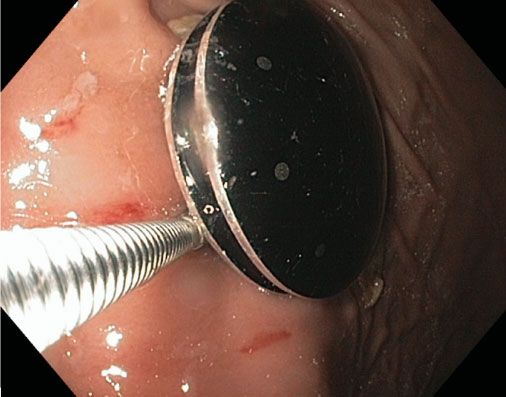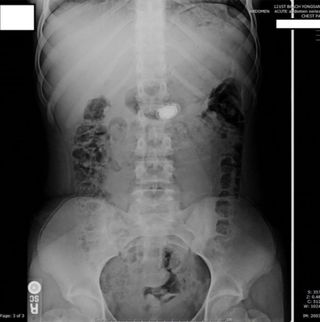Docs Retrieve Misfit Shine from Girl's Stomach — Device Still Works

A 13-year-old girl swallowed her Misfit Shine activity tracker while swimming, but the gadget still worked after doctors retrieved it from her stomach, according to a new report of the case.
The girl said she took the disc-shaped tracker out of its band, and placed it in her mouth while she was swimming, but accidently swallowed it. (It is not clear why the girl put the device in her mouth. The Misfit Shine is waterproof and can be worn while swimming to track laps.)
At the hospital, an X-ray showed the device was in her stomach.
Doctors waited 30 hours to see if the device would pass through the rest of the girl's digestive system, but the tracker didn't budge. The physicians became concerned the device might come apart, exposing the internal lithium battery, which could damage the girl's stomach or intestines.

As a result, the doctors decided to try to remove the tracker using a procedure called an endoscopy, which involves using a flexible tube with a camera to see inside the stomach. The doctors were able to use a snare-like medical tool to lasso the tracker and remove it through the girl's esophagus. [7 Weird Things People Have Swallowed]
"The watch retained normal function despite the low pH [or, acidity] of the stomach and manipulation upon retrieval," the doctors, from the Brian Allgood Army Community Hospital in Yongsan, South Korea (a U.S. military hospital), wrote in the Jan. 19 issue of the journal Case Reports in Gastrointestinal Medicine.
"When synchronized to her mobile device, the [Misfit Shine] watch accurately recorded all advertised data points, to include steps taken, calories burned [and] sleep cycles, and [it] maintained accurate time," the doctors said.
Sign up for the Live Science daily newsletter now
Get the world’s most fascinating discoveries delivered straight to your inbox.
The girl recovered well, and went home the next day.
Follow Rachael Rettner @RachaelRettner. Follow Live Science @livescience, Facebook & Google+. Original article on Live Science.

Rachael is a Live Science contributor, and was a former channel editor and senior writer for Live Science between 2010 and 2022. She has a master's degree in journalism from New York University's Science, Health and Environmental Reporting Program. She also holds a B.S. in molecular biology and an M.S. in biology from the University of California, San Diego. Her work has appeared in Scienceline, The Washington Post and Scientific American.










